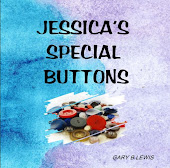This blog is designed to help transform your pedagogical experience.
If you:- are a Primary / Elementary School educator - government, private independent, religious, kids church
- read picture story books to children
- use Circle Time as a tool for Emotional Intelligence, social awareness or are just a novice to Circle Time
As well as primarily providing a resource for educators in the Primary / Elementary School sector to help develop the Emotional Intelligence of students; a secondary desired outcome is that these posts will also contribute towards you re-connecting the soul with the role of teaching.*
Learn how 'Once Upon a Circle Time' can become an irreplaceable tool for:
Developing Emotional Intelligence through Picture Story books
Relational & Emotional Exploration through Picture Story books
Social-relational skill development
Restorative Practices principles
Building on previous Circle Time knowledge & experience
Strengthening Circle Time as circles of trust
Getting more out of silent statements
Constructing searching closed-statement
Developing an understanding of ‘statements without justification’
Capitalizing on open-ended statements
Going emotionally deeper - faster - safer in tackling some difficult topics through the use of Picture Story books
Moving Circle Time beyond the circle into the classroom, school-yard & home
Foundational & preparatory for Restorative Practices in schools
* Each time I have run a workshop in a school, I have had quite a number of staff comment about how the workshop had helped to re-ignite their passion for teaching.
JESSICA find her true VALUE (JESSICA'S SPECIAL BUTTONS)
JACKSON UNCOVERS HIDDEN TREASURE

MORE INFORMATION TO FOLLOW ABOUT HOW TO ORDER YOUR COPIES




